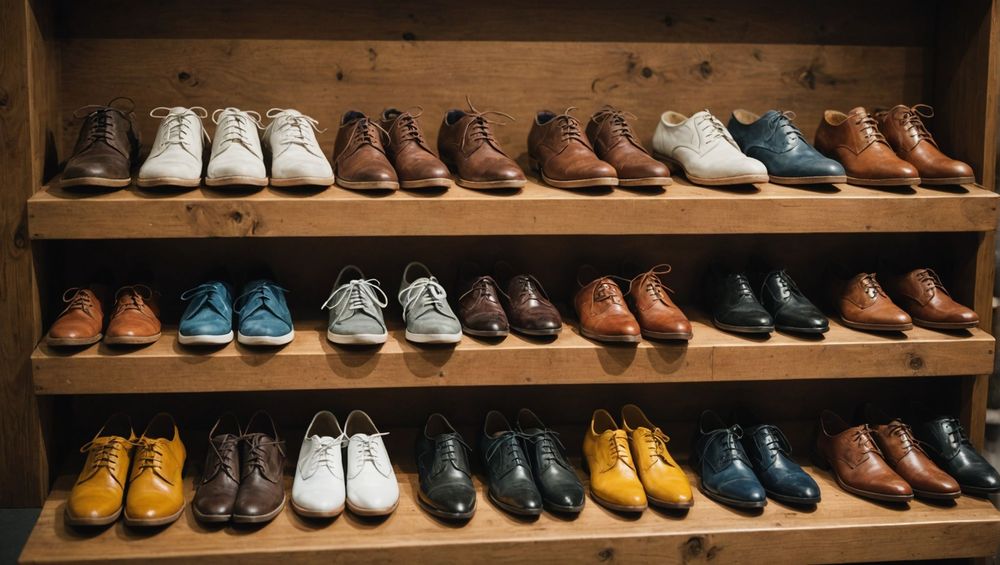Finding the right size for your shoes is crucial for comfort, health, and overall well-being. Ill-fitting shoes can lead to various issues, including blisters, corns, and even long-term problems like plantar fasciitis or bunions. This article will explore the importance of proper shoe sizing and guide you through the steps to ensure your shoes fit perfectly.
Understanding Shoe Size and Fit

Shoe size can often be confusing as it varies between brands, styles, and countries. Different manufacturers use different sizing systems, which creates a challenge for consumers. To ensure your shoes are the right fit, consider the following factors:
- Length: Measure the length of your foot from the heel to the longest toe.
- Width: Measure the width of your foot at the ball; this is crucial as many people have wider or narrower feet than the standard sizing.
- Arch Type: Knowing your arch type (low, medium, or high) can affect how a shoe feels and fits.
- Toe Box Space: Ensure there is enough space at the front of the shoe for your toes to move comfortably.
- Heel Fit: Your heel should fit snugly in the shoe with minimal slippage.
Signs Your Shoes May Not Fit Properly

Even if you believe you are wearing the right size, it’s essential to observe your body for any signs of discomfort. Here are some indicators that your shoes may not be fitting properly:
- Pain: Experiencing foot pain, particularly during or after wearing shoes.
- Blisters: Frequent blisters are a clear sign of friction, often caused by shoes that are too tight or loose.
- Ingrown Toenails: Tight shoes can push against your toenails, leading to painful ingrown nails.
- Socks Wear Out Quickly: If your socks are wearing out faster than expected, this might indicate that your shoes are too big or too small.
How to Measure Your Foot for the Perfect Fit
To find your ideal shoe size, accurate measurement is key. Here is a step-by-step guide for measuring your foot at home:
- Start by placing a piece of paper on the floor against a wall.
- Stand on the paper with your heel against the wall.
- Mark the longest part of your foot on the paper with a pencil.
- Measure the distance from the wall to your mark in inches or centimeters.
- Use a shoe size chart to convert your measurement to the correct shoe size.
Choosing the Right Shoe Style for Your Needs
Different activities require different types of shoes, which can affect how they fit. Here are some categories of shoes and their fitting considerations:
- Running Shoes: They should have ample cushioning and stability based on your foot’s arch type.
- Casual Sneakers: Ensure they have a comfortable fit, offering room for flexibility and movement.
- Formal Shoes: These tend to be more rigid, so aim for a snug fit without tightness.
- Hiking Boots: Allow for thicker socks and ensure the boots support your ankles.
Conclusion
Ensuring the right shoe size and fit is a pivotal part of maintaining foot health and overall comfort. By understanding the factors at play in shoe sizing, recognizing the signs of poor fit, and knowing how to measure your foot accurately, you can make informed choices for your footwear. Remember that the right shoes can drastically improve your daily comfort and prevent future foot problems. Investing time into finding the right size can make all the difference in your mobility and quality of life.
FAQs
- How often should I measure my feet?
It’s a good idea to measure your feet every time you purchase new shoes, especially if you notice changes in comfort or size. - Can shoe size change over time?
Yes, factors like age, weight gain/loss, and pregnancy can affect foot size and shape. - What if one foot is larger than the other?
It’s common for one foot to be slightly larger. Always fit to the larger foot and consider using insoles in the smaller shoe. - Is it okay to buy shoes in the afternoon?
Yes, your feet tend to swell throughout the day, so fitting in the afternoon or evening can yield a more accurate size. - What should I do if my shoes are uncomfortable?
If your shoes are uncomfortable, consider returning them or carefully examining if the fit can be improved with adjustments.





